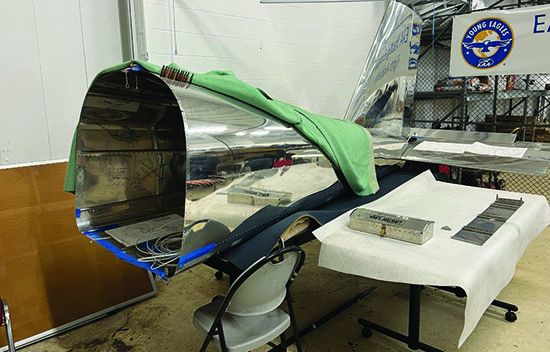From the early days of the pandemic, I’ve watched the amateur-built kitplane market explode with activity—the busiest I’ve seen in years—and suppliers can’t meet the demand. My local EAA chapters are hustling with all kinds of projects in progress, many being assembled to impressively high standards by talented pro-level builders. Hackwork is not an option. No doubt you’ve considered building an aircraft from a kit or buying one that’s already finished. But what about taking on an unfinished project, where the builder got it started, but threw in the towel or died before the aircraft saw the light of day?
Since EAA chapters are prohibited from owning aircraft, many form flying clubs with kit projects. That requires putting dollar signs on the as-it-stands project for member buy-in. As one example, what’s a half-completed Van’s RV kit really worth? Turns out most common components are valued top dollar, but labor is only worth what a buyer is willing to pay for. Shoddy labor, of course, should be a deal breaker unless you’re prepared to redo the work.
I asked Editor at Large Paul Dye, my go-to at sister pub KITPLANES magazine, who pointed out that fair market value for existing kits is complicated. While uncompleted kits change hands all the time (fueled by active online builder forums), you hardly ever know what the actual handshake price was relative to the asking price. We do know that sellers (with popular kits) have been getting a lot more for finished projects—far more than the cost of the parts to build them. It’s easy to draw parallels to the kit-car market (also bustling with activity), where the general rule of thumb is pricing an uncompleted project by starting with the purchase price of the kit and shipping. It’s not too different with aircraft.
Consider high-dollar critical items like the engine. Did the builder pay a deposit but is waiting for delivery (there are big back orders in the engine market and some buyers are fearful of losing deposits), or did he and she take delivery and if so, how is it being stored and preserved and has the warranty run out? Engines and even airframe components aren’t packed for indefinite storage. Cold, damp hangars are the enemy. As for avionics, are they in house and are they current-gen models? You have to realize that some kit projects drag on for many years, so that Terra radio package the builder bought used 25 years ago is more valuable to a museum than it is for the kit.
The FAA requires an official bill of sale from the kit manufacturer before issuing an airworthiness certificate, and most kits are issued a “builder’s number,” variously known as the kit’s serial number. In general, a kit manufacturer won’t issue a new build number to a secondhand buyer no matter the condition of the original kit. Get a bill of sale from the seller that lists the kit’s serial number and the seller’s address, and ask the kit’s manufacturer if it needs this for its records. Van’s Aircraft says it needs this to maintain an FAA paper trail.
Van’s also offers solid advice for those contemplating a secondhand unfinished RV kit, admitting it’s in a difficult position because once the kit leaves its shipping dock, it has no knowledge of what happens to it—including the craftsmanship of any assembly work accomplished. Don’t count on a kit manufacturer for advice on whether you should or shouldn’t buy kit serial number whatever. But consider that older kits generally don’t include some of the pieces that come in newer ones. Maybe it’s wheels and tires or other hardware and consumables. A starting point is to scrutinize the kit’s parts inventory and packing lists, and check that they exist in the builder’s inventory. (Make sure there is a complete set of build plans.) Having to source missing parts years after the kit was shipped when you discover you don’t have pieces to continue a section of the build can be a big work-stopping distraction, not made easier by supply chain issues.
And when you add the price of sourcing the components to what you paid for the kit, you might realize you could have bought a new kit—which may be easier to build—for the same or less money.
—Larry Anglisano





